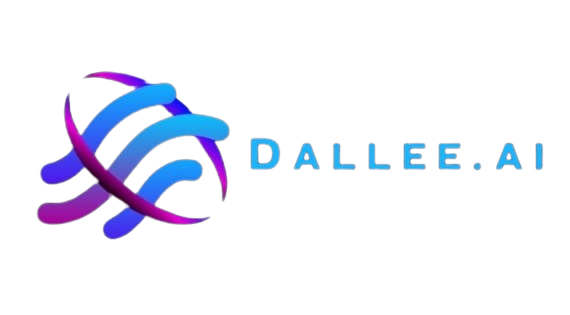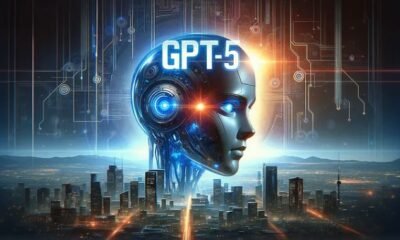Artificial Intelligence
5 Challenges in Machine Learning Adoption and How to Overcome Them

ML is the new era of the predictive and explanatory power of data that is used in all sectors, from data analysis to complex automated processes. Nevertheless, the implementation of machine learning is not an easy task because of its immense possibilities. Organizations face not only the technical complexities of ML technologies but also the cultural resistance to their integration into the workflow. In this article, we explore five key challenges in machine learning adoption and discuss strategies to overcome them.
Data Quality and Availability
Success in machine learning algorithms lies in high-quality data and the access provided to them. Poor or insufficient data will result in wrong models and, thus, inaccurate predictions. High-quality, reliable, and complete data is attainable only through rigorous schemes of data collection, preprocessing, and validation. The master key to counteracting these dilemmas is when it comes to unleashing the very potential of machine learning models.
Challenge:
Data is the core of every machine learning model. To be trained successfully, the models need high-quality, relevant, and readily available data. Nevertheless, many organizations face data-related problems, for instance, data is incomplete, inconsistent, or unstructured. Data silos are another common issue where information is stored in isolated systems that do not communicate with each other, making it very hard to get the complete dataset necessary for training models.
Solution:
The engine of machine learning models can completely be data. These models require high-quality training data to be relevant and easily accessible in adequate amounts so that the training can be appropriately served. However, most enterprises face a lot of troubles regarding inaccurate, fault-uniform, or ill-structured data. Another classic example is data bolt holes: the information sits in a separate system that doesn’t talk to the other system; therefore, it’s very hard to obtain the whole dataset required to train the models.
The institutions should also be investing in data pre-processing methods, including data cleaning, normalization, and augmentation, to guarantee that their datasets are of high quality. Moreover, synthetic data generation could complete real-world data, mainly when some kinds of data are hard to find or even hard to get.
Read more: How Does PS2 Filter AI Work Complete Guideline
Lack of skilled talent
A shortage of qualified workers in the field of machine learning is the main inhibitor to implementing it effectively, as conditions for developing, deploying, and running models include the need for expertise in the relevant specialized area. To fill this gap, it is necessary to practice new educational methods and training programs and to establish relations between researchers and companies. Constructing highly efficient in-house teams or getting skills from authorities is necessary to overcome these barriers.
Challenge:
Machine learning is the kind of process that is most important for this specialized skill, which is often in short supply. The expertise areas of data science, statistics, and programming, as well as domain-specific knowledge, are needed for developing, deploying, and maintaining ML models. The great majority of organizations, however, have difficulty both finding and retaining qualified professionals who can lead the ML projects of their organizations, which, in turn, leads to the slow implementation of the project and unsatisfactory results.
Solution:
Organizations can look at upskilling and reskilling the existing workforce to bridge the talent gap through investments. Thereby, enabling training programs, workshops, and certification courses on machine learning would provide a way for organizations to enable their employees to keep up. Collaboration with academic institutions and online learning platforms further allows employees to gain access to the latest knowledge and research in the field.
Another way to use the external side of expertise is through partnerships with ML consulting Another way to use the external side of expertise is through partnerships with ML consulting firms or by hiring freelance data scientists. Such experts come bearing great insights and advice for ML projects and help an organization navigate the extra mile toward adoption. AutoML democratizes machine learning and helps non-experts buy, build, and deploy models with minimal interventions.
Read More: How to Use Adobe Background Remover
Integration with Existing Systems
A shortage of qualified workers in the field of machine learning is the main inhibitor to implementing it effectively, as conditions for developing, deploying, and running models include the need for expertise in the relevant specialized area. To fill this gap, it is necessary to practice new educational methods and training programs and to establish relations between researchers and companies. Constructing highly efficient in-house teams or getting skills from authorities is necessary to overcome these barriers.
Challenge:
Integration of machine learning models with existing processes and systems is one of the major challenges. Such legacy systems were designed to work with older technologies, most of which do not support state-of-the-art ML frameworks. In itself, integration may be overly resource-intensive, requiring large-scale changes in workflows, databases, and IT infrastructure.
Solution:
Successful integration of the ML models within existing systems requires a strategic approach. Any organization should start with a proper analysis of the current IT infrastructure, with the purpose of detecting possible compatibility challenges and parts that must be upgraded. Modernization of legacy systems by shifting to cloud-based platforms and microservice architectures will further alleviate integration with ML models.
Other integration strategies include the use of application programming interfaces and middleware solutions to bridge the gap between the ML models and old, legacy systems. Such tools facilitate seamless communication between different software components, so that ML models are able to communicate with existing applications without any significant changes in the underlying systems.
It is equally important to include all stakeholders in the process of integration that would involve IT, operations, and business units. This will ensure that machine learning models are in line with business goals and that disruptions to the present workflow are not expected to occur.
Ethical and Regulatory Concerns
Moral and regulatory worries in artificial intelligence have to do with things such as information security, prejudice, and openness, which are the underlying reasons for discrimination or harm. The solution to these problems consists of compliance with the law, the creation of codes of conduct, and the implementation of checks against discrimination. Legal certainty and responsible AI are necessary for building confidence and avoiding problems with the law.
Challenge:
In deploying machine learning models, there arise a lot of ethical and regulatory issues, primarily in the form of data privacy, algorithmic biases, and transparency. Legal frameworks and organizational guidelines are coupled with such complex ethical considerations that companies should perform ML initiatives within the bounds of privacy laws and not create new biases that are unfair. Failure to do so might lead to reputation loss, damage losses, and customer trust erosion.
Solution:
An organization has to be very proactive about responsible AI practices to avoid ethical and regulatory risks. This comprises the integration of fairness and bias detection tools that will enable the identification and rectification of discriminatory patterns in ML models. For example, frequent audits could be conducted to ensure that the ML algorithms adhere to ethics and other regulatory requirements.
Another critical issue is data privacy. Organizations should, therefore, ensure adherence to set laws on the protection of data, such as GDPR and CCPA. This shall call for them to not only develop strong techniques for anonymizing data but also seek explicit consent from subjects whose data is being used and be transparent about how the information is used.
An AI ethics committee or Chief Ethics Officer can provide oversight and governance for ML projects to ensure ethical considerations are baked into the process all the way from development to deployment. The constitution of such a committee shall ensure diverse representation to be better placed on potential biases and ethical dilemmas from multiple angles.
Scaling and maintenance
The tasks of expansion in machine learning systems are becoming more complicated since the system needs to provide an equal percentile or higher performance over large datasets and in a changing environment. Setup of the infrastructure, automated monitoring, and continuous model updates are some of the most complex tasks necessary for the proper functioning of the system. In particular, appropriate allocation and distribution of resources are necessary to deal with the real scenario.
Read More: How AI For Clinical Workflows
Challenge:
After successfully deploying a machine learning model, scaling and maintenance have usually been the obstacles organizations face. Scaling refers to deployment across different departments, regions, or use cases, something complex due to variation in data, processes, and infrastructure. Moreover, an ML model requires continuous checking of its performance and hence needs maintenance to be accurate and effective. Updates to the model using new data should be made regularly so it remains current with changing conditions. Additionally, model drift where its performance deteriorates due to changes in the underlying distribution of the data is handled.
Solution:
Machine learning models should be modularly developed when an organization is capable of scaling them. This approach consists of the development of model components that are reusable, with standardized processes that can be seamlessly applied in different contexts. Containerization using Docker or Kubernetes can enable the deployment of ML models in different environments due to the uniformity and scalability they offer.
An organization should adopt these MLOps frameworks so as to provide an automated environment, integrated in terms of ML development and IT operation practices, for the smooth deployment, monitoring, and maintenance of trained ML models. Some of the practices that constitute MLOps include automated pipelines that make data ingestion, model training, and model deployment easy; tools for continuous monitoring and performance evaluation of trained models are also available.
The models should be re-trained on fresh data regularly to enable them to detect and deal with model drift. Besides, A/B testing should be performed. Organizations should adopt hybrid models that can run different models on the same event in parallel to handle the big changes expected in the data environment, ensuring robustness and reliability.
Limitations
With the adoption of machine learning, problems such as data quality could be raised, and by the same token, a solution in the form of robust data collection and processing system implementation can be provided. Another challenge is the lack of skilled labor and investment, which would be one of the solutions to educational and developmental activities. Proper scheduling and sectional release can help in the transition; however, problems often occur in the merging of existing systems. The other serious threat is the bias in ML models, which could be mitigated by using fairness checks and a variety of data types. Lastly, what is important is interpretability; explainable AI tools would provide stakeholders with a clear insight into the data-driven decision of an ML.
Conclusion
Machine learning is a topic with huge potential to bring innovation and efficiency across industries, but the challenges within its adoption process may cripple its potential very effectively if not managed appropriately. Enhancing data quality, upskilling talent, integration without glitching, taking ethical considerations seriously, and scaling with strong maintenance practices will ensure that an organization can surely overcome any possible challenges in harnessing machine learning to its full potential. It is the complexities of adopting ML that call for a strategic and cross-functional approach reverent to the perspectives and expertise of the data scientist, the IT professional, the business leader, and the ethicist. Properly armed with the right strategies and tools, organizations would be able to turn such challenges into opportunities for growth and stand at the forefront of today’s digital competition.
Follow Dallee for more AI updates and News.

-

 AI Chatbot1 year ago
AI Chatbot1 year agoJoyland AI: An In-Depth Guide to AI Storytelling and Character Creation
-

 Artificial Intelligence1 year ago
Artificial Intelligence1 year agoIs Janitor AI down? Analyzing Janitor AI’s Current Status:
-

 Artificial intelligence1 year ago
Artificial intelligence1 year agoWhat is Chain-of-Thought (CoT) Prompting: A Beginner’s Guide
-

 Ai News1 year ago
Ai News1 year agoChat GPT Login: Easy Step-By-Step Access Guide
-

 Artificial intelligence1 year ago
Artificial intelligence1 year agoBeta Character AI: Everything You Need To Know
-

 Ai News1 year ago
Ai News1 year agoGPT-5: Features, Abilities And Everything You Should Know About GPT-5
-

 Art generator1 year ago
Art generator1 year agoTop 8 Free NSFW AI ART Generators From Text Prompts
-

 Ai Tool1 year ago
Ai Tool1 year agoHow To Make Download Video From Y2mate com 2024



